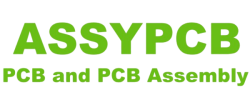Configurable Switch Contact Blocks
Configurable Switch Contact Blocks are core components in electronic switch systems, primarily used to implement circuit on/off control and signal switching.
1. What are the Core Features of Configurable Switch Contact Blocks?
Modular Design: Configurable contact blocks are typically used with switch bodies, supporting single-pole (SPST) or multi-pole (such as DPST) configurations, and enabling flexible circuit configurations through screw terminal connections.
Electrical Parameters: Typical specifications include load capacity (such as 6A @ 120VAC or 550mA @ 125VDC), making them suitable for applications such as industrial control and automation equipment.
Compatibility: Manufacturers such as Schneider Electric offer a series of products (such as the Harmony XB4/XB5), ensuring seamless integration with existing switch systems.
2. What are the Application Scenarios of Configurable Switch Contact Blocks?
Industrial Automation: Used in applications such as emergency stop buttons and limit switches, ensuring high-reliability signal transmission.
Test Systems: In NI Switch modules, configurable contact blocks support fast switching of mechanical or solid-state relays, adapting to diverse testing needs.
3. Technical Details of Configurable Switch Contact Blocks
Structure Types: Available in armature relays (lifespan 105-108 cycles) and reed switch relays (lifespan 106-109 cycles). Users should select a relay based on switching speed, lifespan, and other factors.
Configuration Options: Supports SPST-NO (single-pole, single-throw, normally open) modes. Select models offer RoHS3 certification.
